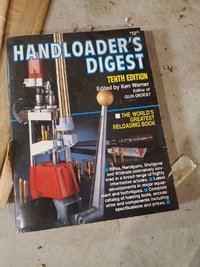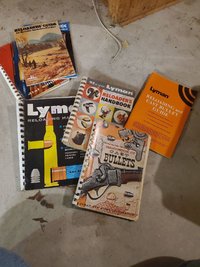Do old reloading manuals have any value, even if just for collectors?
I picked up a bunch of gun books from someone and they include some reloading manuals that are 30+ years old:
- Handloader's Digest, "new sixth edition",
price: "Five Dollars and Ninety-Five Cents"
Copyright MCMLXXII
- Hornady Handbook of Cartridge Reloading, Third Edition
© 1980, fourth printing 1985
- Speer Reloading Manual, number 11
© 1987, third printing September 1988
- Basic Handloading (an Outdoor Life Book)
© 1978
- Handloading (a publication of the National Rifle Association of America)
© 1981
Obviously none of the recipes should be used now, since the newest book is 35 years old, but I can imagine someone might like them for historical value.
Are these just recycle material, or can I give them to a loving home?
I picked up a bunch of gun books from someone and they include some reloading manuals that are 30+ years old:
- Handloader's Digest, "new sixth edition",
price: "Five Dollars and Ninety-Five Cents"
Copyright MCMLXXII
- Hornady Handbook of Cartridge Reloading, Third Edition
© 1980, fourth printing 1985
- Speer Reloading Manual, number 11
© 1987, third printing September 1988
- Basic Handloading (an Outdoor Life Book)
© 1978
- Handloading (a publication of the National Rifle Association of America)
© 1981
Obviously none of the recipes should be used now, since the newest book is 35 years old, but I can imagine someone might like them for historical value.
Are these just recycle material, or can I give them to a loving home?


